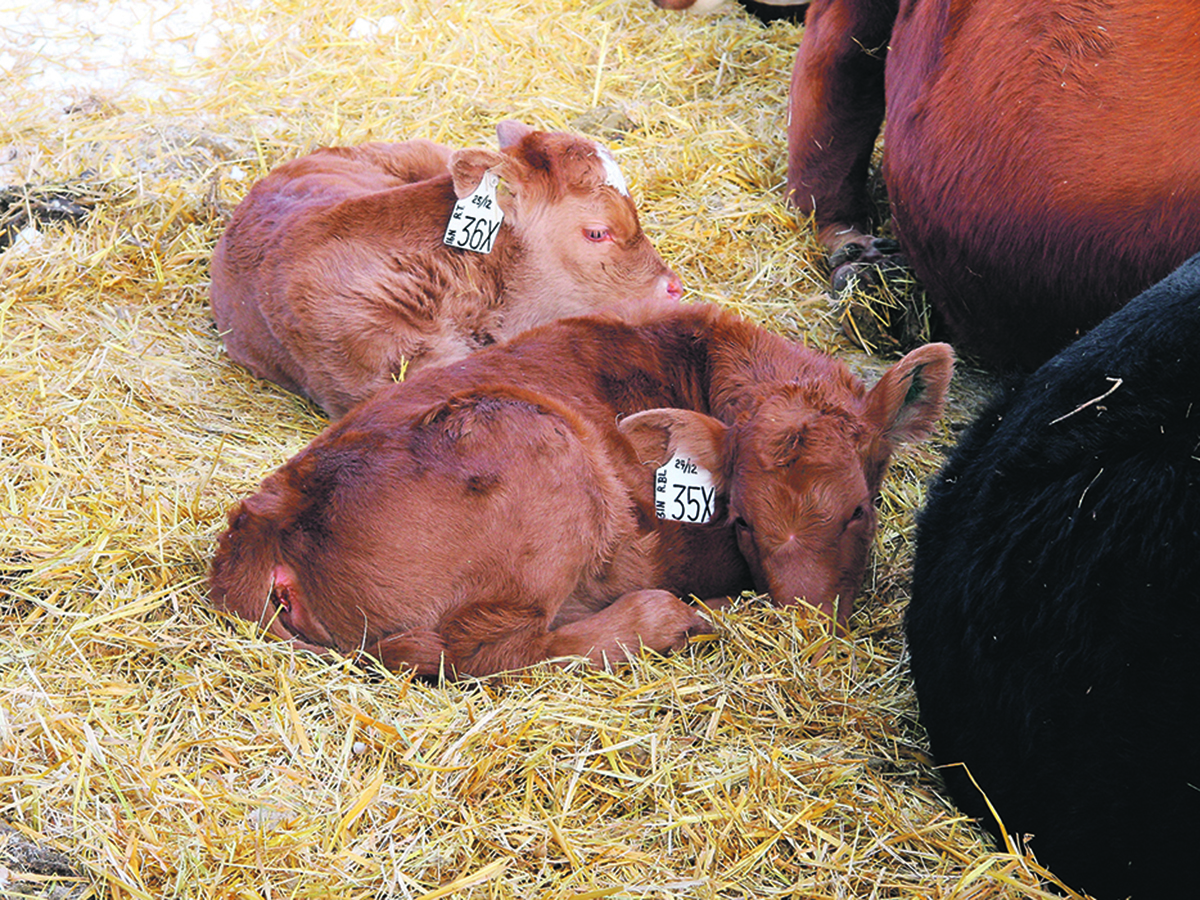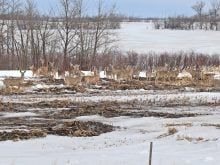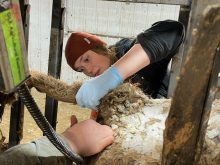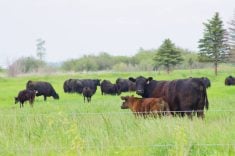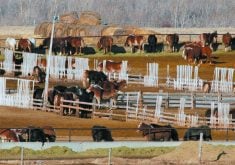Glacier FarmMedia – Shortening the breeding season, higher vaccine uptake, regular feed testing and more use of implants are all ways that Manitoba cattle producers can improve the health and profitability of their herds.
That’s based on the results from the first national Canadian Cow-Calf Survey, published last fall by the Beef Cattle Research Council (BCRC).
While Western Canada has previously been the subject of similar studies, the 2024 survey expanded participation to 600 producers across Canada, covering the 2022 breeding season through to weaning in 2023.
Read Also

India slaps 30 per cent import duty on yellow peas
India has imposed a 30 per cent duty on yellow pea imports with a bill of lading date on or after Nov. 1, 2025.
The national survey has some nuggets of wisdom for Manitoba producers.
On March 13, Reynold Bergen dove into the results and benchmarked how Manitoba cattle producers can apply the survey results to their herds in a Stock Talk online seminar hosted by the provincial agriculture department.
The province could benefit from a tighter breeding season of 63 days or less, said Bergen, the BCRCs science director.
The survey reported that overall, about 32.3 per cent of respondents met that threshold for cows and 38.4 per cent for heifers. However, Manitoba reported being under those averages, at 27 and 27.3 per cent, respectively.
That means the province on average has a longer calving season and therefore a less uniform calf crop to take to market.
“A less uniform calf crop generally means lower prices,” Bergen said.
It also means if heifer calves are born later in the calving season, they will have less time to develop before they’re exposed to a bull if they’re being kept as a possible replacement.
The reason the ideal breeding season is 63 days or less is that it will maintain a 365-day calving interval. If a breeding season runs longer than that, cows will calve later and later every year and wean lighter and lighter calves.
“A late calf is worth an awful lot more than no calf at all, but that 63-day breeding season is quite achievable if nutrition is up to snuff, if cows are in good body condition, if … bulls are fertile,” Bergen said.
Melissa Atchison, a research and extension specialist with Manitoba Beef Producers, believes one of the reasons Manitoba producers have a longer breeding season is the high amount of labour and infrastructure that’s needed.
“I think it can be difficult. If anybody has ever tried to load bulls out of the pens, it can be not the most easy job, and they can be unco-operative sometimes,” she said.
Producers also like the cash flow and option of having calves at different times of year to bring to market, she added.
Despite the challenges, Atchison believes that achieving a 63-day breeding season in Manitoba is a reasonable goal. The most important thing is to look long and hard at late calving cows and consider culling if necessary. Producers should make sure they are using heifers that are from very fertile cows that calve on the first cycle consistently, she said.
”Those are a couple of things that can help tighten up that calving interval,” she said
Manitoba had higher open rates than anywhere else in Canada for both heifers and cows, which reflects nutrition management and body condition. Disease and parasites also play a role, Bergen said.
There’s a common theme that runs through the potential improvements for Manitoba cattle producers — back to the basics issues such as nutrition, animal health, herd management and lower calf mortality before weaning.
“Paying attention to the basics can help support your bottom line,” he said.
While Manitoba is around the national average for feed testing, that average is less than 50 per cent, leaving a lot of room for improvement, webinar attendees heard. Feed quality isn’t consistent due to different growing conditions and weather. It can also vary due to its origin.
“Last year’s feed test is not going to tell you much about this year’s feed,” Bergen said.
Most producers don’t test their feed because their cattle appear healthy. This is a misconception, Bergen warned, citing cases of copper deficiency in cattle that had great body condition, green, lush forages and clear and abundant well water.
“Just the look of the feed can be misleading,” Bergen said.
Atchison agreed, citing Manitoba’s complex mineral nutritional landscape.
“Not only do we have low copper levels in our soils and our forages, we also have other minerals that can tie up copper and absorption as well. So, getting enough copper into those cows and also getting them to absorb it is a huge issue as well,” she said.
In addition to producers who don’t test because their animals appear healthy, others might not be aware of the problem or have access to testing resources. That’s why Manitoba Beef Producers has brought testing equipment out to different watershed management offices, Atchison said.
Producers who feed test can also end up saving themselves money in the long run if they discover that their feed is of a much higher quality than their cattle need. They can sell it off to a dairy producer or a horse owner, or use it for bred heifers, heifers that are still growing or for later in pregnancy when cows most need nutrients.
Manitoba producers rank higher than average when it comes to providing mineral and vitamin supplementation on a year-round basis, but around 15 per cent of producers still aren’t supplementing. Producers who offer free choice supplementation through mineral blocks or mineral feeders can also run into problems, Bergen said.
“The challenge with them always is that … this animal may choose to eat more than it needs, and this one may choose not to eat any at all, and so it can be tough when it’s free choice to make sure that everybody’s getting what they need.”
Bergen recommends producers talk to nutritionists about what minerals they need to supplement with in their area and how to integrate it into their feeding program.
“In some cases, chelated minerals might be the right choice, especially if you’re in an area with low copper, which is a lot of Western Canada, or if you’re in an area with high molybdenum, which is also a lot of Western Canada,” he said.
The study found that hardly any producers implant their calves, at just 20 per cent across the country. Eighty per cent of producers in Manitoba are not using implants, and therefore are missing a big opportunity, Bergen said, adding that most producers are concerned about the cost and have doubts about the benefits.
“An implant costs about two bucks, but it’s going to give you about 10 pounds of weaning weight … probably more, and when each pound of weaning weight is worth three or four bucks, that’s an easy 20-to-one return on investment,” Bergen said.
“It’s easy to do, it’s fast to do, probably a higher 20-to-one return on investment, as a matter of fact. So, they’re a big opportunity.”
However, other producers may be against the use of implants on ethical grounds, Atchison said.
“That’s totally fine. They’re entitled to that opinion. The research does show that it is better from an environmental impact and from a finance knowledge standpoint,” she said.
Atchinson said she thinks pre-weaning implants are underused in Manitoba, adding producers should talk to their veterinarians about what might be a good option for their operations and goals.
There’s also the matter of market access. Certain branded programs and the European Union require hormone-free meat, removing implants as an option for producers selling into that market.


